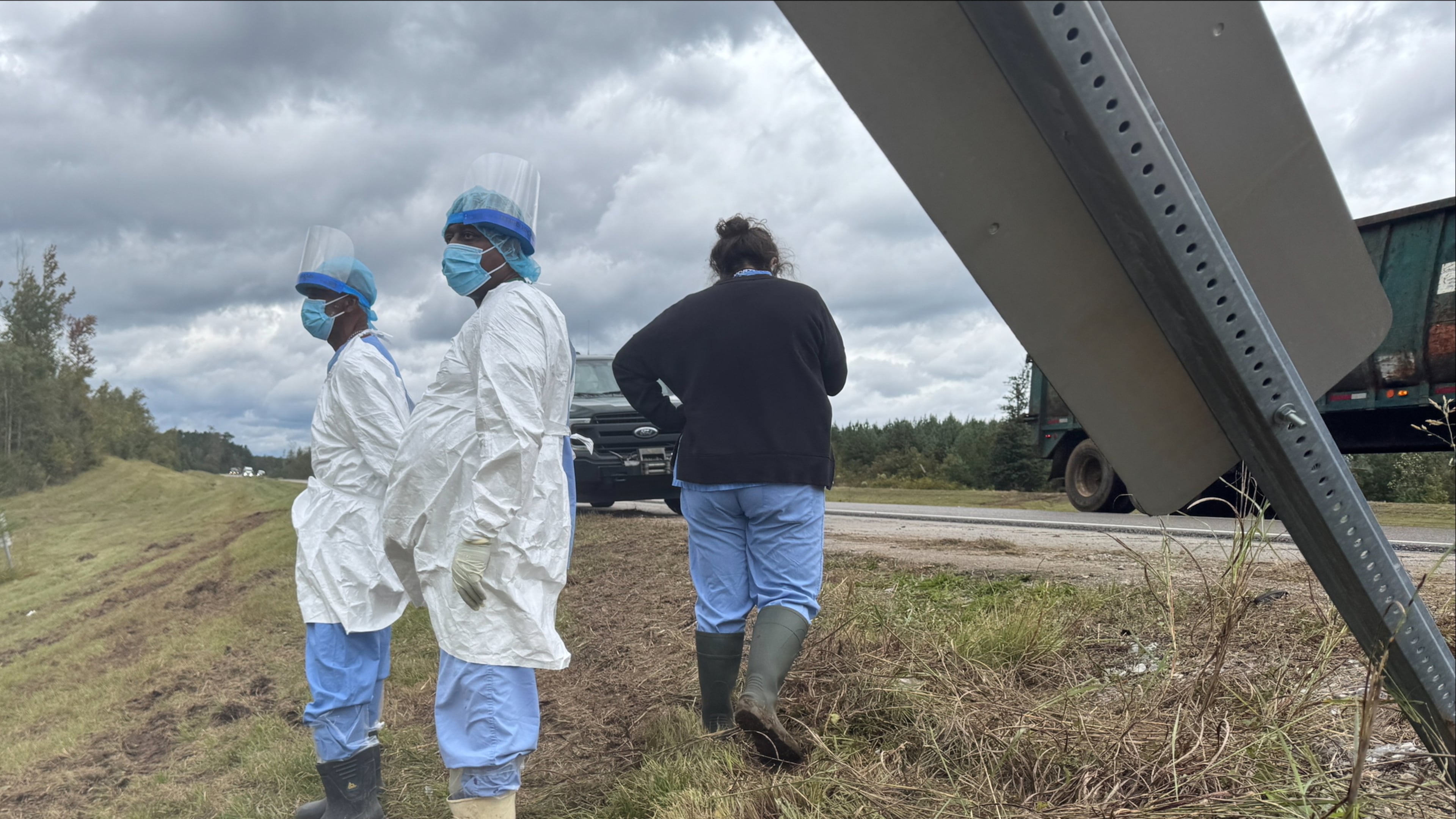Monkey escape in Mississippi gives a glimpse into the secretive world of animal research

The recent escape of several research monkeys after the truck carrying them overturned on a Mississippi interstate is the latest glimpse into the secretive industry of animal research and the processes that allow key details of what happened to be kept from the public.
Three monkeys have remained on the loose since the crash on Tuesday in a rural area along Interstate 59, spilling wooden crates labeled “live monkeys” into the tall grass near the highway. Since then, searchers in masks, face shields and other protective equipment have scoured nearby fields and woods for the missing primates. Five of the 21 Rhesus macaques on board were killed during the search, according to the local sheriff, but it was unclear how that happened.
Key details remain shrouded in secrecy
Mississippi authorities have not disclosed the company involved in transporting the monkeys, where the monkeys were headed or who owns them. While Tulane University in New Orleans has acknowledged that the monkeys had been housed at its National Biomedical Research Center in Covington, Louisiana, it said it doesn't own them and won't identify who does.
An initial report from the sheriff described the monkeys as “aggressive” and carrying diseases such as herpes, adding to the confusion. Tulane later said the monkeys were free of pathogens, but it is still unclear what kind of research the monkeys were used for.
The questions surrounding the Mississippi crash and the mystery of why the animals were traveling through the South are remarkable, animal advocates say.
“When a truck carrying 21 monkeys crashes on a public highway, the community has a right to know who owned those animals, where they were being sent, and what diseases they may have been exposed to and harbored simply by being caught up in the primate experimentation industry,” said Lisa Jones-Engel, senior science adviser on primate experimentation with People for the Ethical Treatment of Animals.
“It is highly unusual — and deeply troubling — that Tulane refuses to identify its partner in this shipment,” Jones-Engel added.
One thing that is known is that the 2025 Chevrolet Silverado pickup hauling the monkeys was driven by a 54-year-old Cascade, Maryland, man when it ran off the highway into the grassy median area, the Mississippi Highway Patrol said in a statement to The Associated Press. The driver wasn’t hurt, nor was his passenger, a 34-year-old resident of Thurmont, Maryland.
Confidentiality is built into contracts, blocking information
Transporting research animals typically requires legally binding contracts that prohibit the parties involved from disclosing information, Tulane University said in a statement to the AP. That's done for the safety of the animals and to protect proprietary information, the New Orleans-based university said.
“To the best of Tulane’s knowledge, the 13 recovered animals remain in the possession of their owner and are en route to their original destination,” the statement said.
The crash has drawn a range of reactions — from conspiracy theories that suggest a government plot to sicken people to serious responses from people who oppose experimenting on animals.
“How incredibly sad and wrong,” Republican U.S. Rep. Marjorie Taylor Greene said of the crash.
“I’ve never met a taxpayer that wants their hard-earned dollars paying for animal abuse nor who supports it,” the Georgia congresswoman said in a post on the social platform X. “This needs to end!"
Tulane center has ties to more than 155 institutions worldwide
Tulane's Covington center has received $35 million annually in National Institutes of Health support, and its partners include nearly 500 investigators from more than 155 institutions globally, the school said in an Oct. 9 news release. The center has been funded by NIH since 1964, and federal grants have been a significant source of income for the institution, it said.
In July, some of the research center’s 350 employees held a ribbon-cutting ceremony to mark the opening of a new 10,000-square-foot office building and a new laboratory at the facility. This fall, the facility's name was changed from the Tulane National Primate Research Center to the Tulane National Biomedical Research Center to reflect its broader mission, university officials announced.
Research monkeys have escaped before in South Carolina, Pennsylvania
The Mississippi crash is one of at least three major monkey escapes in the U.S. over the past four years.
Last November, 43 Rhesus macaques escaped from a South Carolina compound that breeds them for medical research after an enclosure wasn't fully locked. Employees from the Alpha Genesis facility in Yemassee, South Carolina, set up traps to capture them. However, some spent two months that winter living in the woods and weathering a rare snowstorm. By late January, the last four escapees were recaptured after being lured back into captivity by peanut butter and jelly sandwiches.
In January 2022, several cynomolgus macaque monkeys escaped when a truck towing a trailer of about 100 of the animals collided with a dump truck on a Pennsylvania highway, authorities said. The monkeys were headed to a quarantine facility in an undisclosed location after arriving at John F. Kennedy International Airport in New York on a flight from Mauritius, an Indian Ocean island nation, authorities said. A spokesperson for the Centers for Disease Control and Prevention said all of the animals were accounted for within about a day, though three were euthanized for undisclosed reasons.

